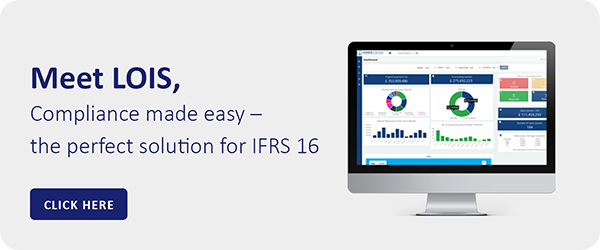There are many reasons why companies choose to lease rather than purchase an asset outright, which this article will discuss. Companies now need to navigate the implications of the new accounting standard – IFRS 16/ AASB 16 when making that decision.
Fortunately under the new lease accounting standard, the reasons why organisations choose to lease, and the inherit benefits within, remain the same. Do you need a quick recap on the implications of IFRS 16? This page will help.
What are the benefits of leasing?
Here are just some of the reasons why companies may choose to acquire the latest technology or equipment via an operating lease structure rather than using capex;
- Avoid using cash to acquire an asset that is either non core or attracts high rates of obsolescence
- Fixed term payments over the duration of lease, which matches the useful life of the asset (typically 3- 5 years)
- Opportunity to partner with an asset management specialist for cost effective and efficient management at the start, end and throughout the lease
- Avoid end of term ownership responsibilities – simply hand back and upgrade with new equipment
- Manage obsolescence - ensuring employees aren’t using equipment that is beyond its useful life
- Convenience – your equipment financier will manage the components of the equipment lifecycle. From establishing a credit facility, liasing with suppliers, and the equipment disposal and refresh process.
How does IFRS 16 impact these benefits of leasing?
Initially it was thought that the fact the operating leases will now be on balance sheet would alter or wane businesses appetite to consider leasing as an option. The fundamentals driving the lease vs buy decision have remained the same and are not being impacted by the IFRS 16 accounting standards.
-
The accounting standards will not affect how leases spread the cost of an asset over the life of the lease, removing the impact that high initial purchase costs have on cash flows.
-
The new standard also does not impact how leasing allows companies faster and more cost effective access to upcoming technologies and equipment that drive their business functions further and help them avoid technological obsolescence.
-
Nor does it impact how leasing allows businesses the benefits of the right to use an asset, but without the costs and risks of full ownership.
-
Leasing will continue to offer the same complementary services provided by lessors such as favourable taxation, maintenance and uncomplicated asset disposals.
Generally speaking, leasing will still retain its appeal to many organisations as an alternate form of financing the procurement of assets required for a competitive and successful business. What the new lease accounting standard will affect though is how leases are reported on in financial statements.
Adjustments to Accounting
For the most part, the operational implications of the IFRS 16 /AASB 16 accounting standard will generally amount to a mandatory accounting change that aims to give a more accurate and transparent representation of a company’s assets and liabilities. Although there will be no change to the real assets or liabilities that arise from leasing, it will be clearer to investors and auditors, as operating leases are included in more than just the footnotes.
The biggest concern is amongst companies that rely on operating leases precisely for their current ability to remain as off balance sheet calculations under IAS 17 and FAS 13. Therefore, it is likely that most businesses will not need to change whether they lease, but rather HOW they lease their assets.
Companies will be inclined to negotiate more favourable lease rates and beneficial end of lease terms, as well as applying appropriate lease vs. buy scenarios to ensure they are maximising the benefits that leasing provides. For some companies, the new standard will bring about further relief, such as the revised definition of a lease, which will mean that some agreements currently considered leases will now be defined as services instead.
It is argued that the most challenging aspect of the new standard is not actually applying the accounting adjustments themselves, but the challenges associated with collating and systematising an entire lease portfolio, ready to apply the new mandatory accounting principles. Realistically this process will take upwards of 6 months to plan and execute; with the requirement to implement an electronic storage and management system for your business's lease portfolio.
Better Decisions Ahead
The lease vs. buy decision making process has been a staple of procurement activities well before the finalisation of the new lease accounting standards. Common sense has dictated that companies should review the benefits, consequences and costs of their asset financing options in order to get the best deal available at the most competitive, cost-effective rate.
Recognising virtually all leases and their associated assets and liabilities on the balance sheet is just another aspect to consider in the quest for effective procurement.
What the lease accounting changes will encourage, though, is a complete top to bottom review of a company’s internal leasing practices. Whether it’s reviewing the existing systems and processes currently in place, implementing advanced lease management software or evaluating the performance and effectiveness of an outsourced vendor, companies will have to be agile in their reaction to the changes.
This incentive to review internal leasing protocol will act as the perfect opportunity to optimise processes and drive operational reforms that are likely to yield savings, both from an operational and economic perspective. To help with the transition to the new standard, many of the world’s leading brands are turning to lease management software as a means of optimising and collating their lease portfolio in one place. Quadrent’s own lease accounting software, LOIS, provides lessees with one centralised platform to oversee and manage the entire transition. The software also incorporates an integrated IFRS 16 reporting functionality that helps generate the required retrospective comparative reports obligatory for compliance.
